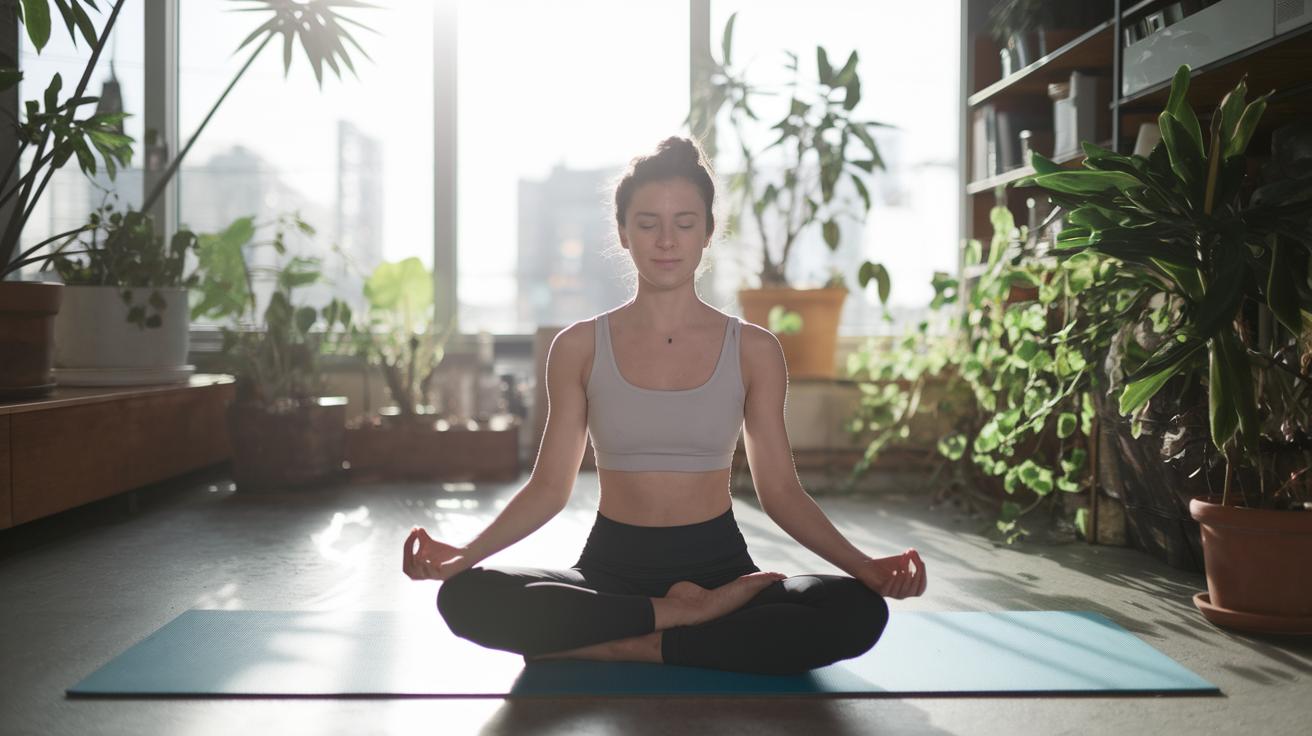Ever feel your thoughts zooming like cars on the 401 at rush hour?
It can feel out of control.
But you can find a bit of quiet in just two minutes.
Studies show even short pauses ease stress and sharpen focus.
(Pauses are simple moments to notice your breath settling like a soft tide.)
And we’ll walk through a gentle, step-by-step plan to weave mindfulness into your day.
Think of it like sipping tea – small sips add up.
Start with two minutes.
You might feel calm creep in at surprising times.
Your shoulders may soften.
Your mind may clear like a crisp morning sky.
So, ready to try a habit that nurtures ease and focus?
Here’s your daily mindfulness roadmap you can really stick with.
Actionable Roadmap to Build a Daily Mindfulness Habit
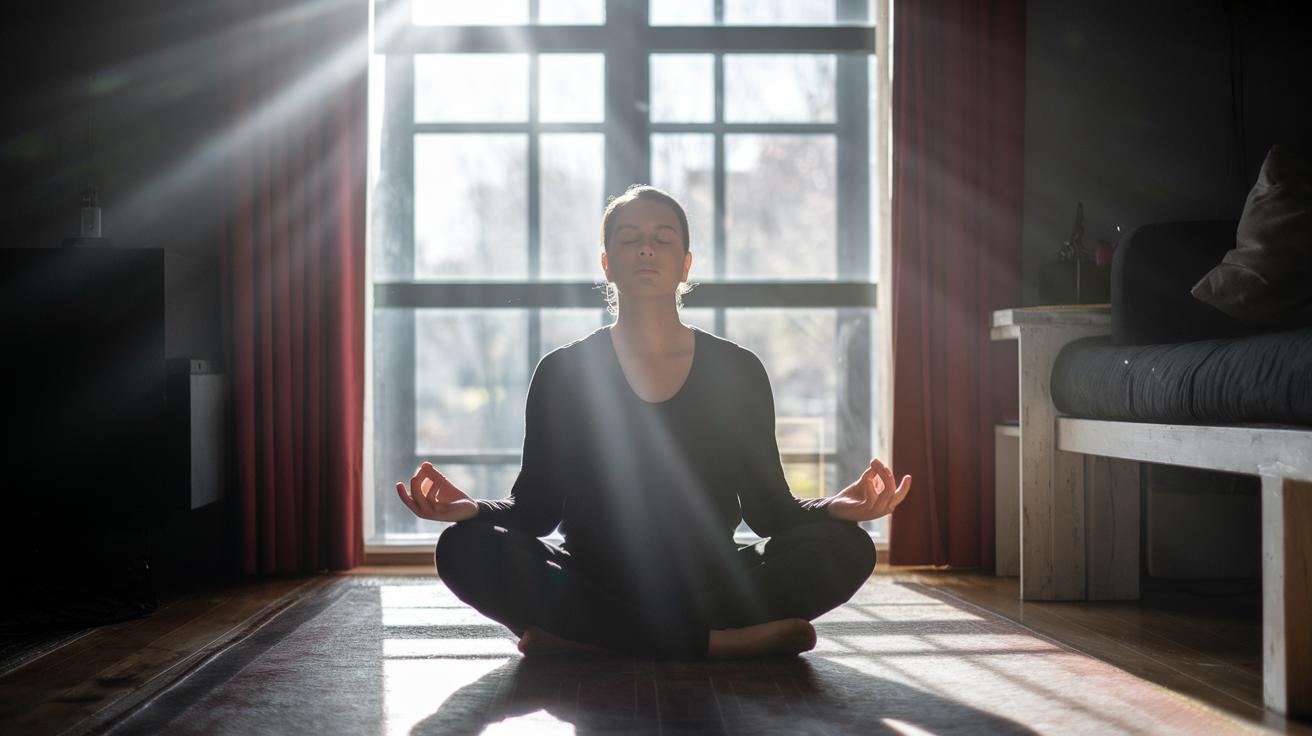
Start with just two minutes each day. Find a time you already have, maybe right after you wake, at lunch, or when you get home. Tying meditation to something familiar makes it easier to keep up.
- Pick a quiet spot to sit. A cushion, a chair or even the floor works fine.
- Set a two-minute timer and simply notice your breath.
- Follow the inhale from your nose into your belly and the exhale back out.
- Count “one” on the inhale, “two” on the exhale up to ten, then begin again.
- When your mind drifts, gently note the thought and return to your breath without judging.
After a week at two minutes, nudge your timer to five minutes. In week two, aim for ten minutes. By week three, try fifteen. At the end of a month, twenty minutes will feel natural. This slow increase builds confidence and consistency.
Next, bring mindfulness into everyday moments. In the shower, notice the warmth of the water on your skin. On your walk to the car, feel each footstep. While washing dishes, breathe in the scent of soap and feel the water’s warmth. These little pauses help you stay grounded all day.
Stick with this step-by-step plan and meditation will become part of your routine. Over time, you might notice stress easing, focus sharpening and a calm ease settling into everything you do.
Crafting a Morning Mindfulness Ritual for Consistency

Sit up in bed. Breathe in deeply three times. Feel your chest lift like a gentle tide. Then let it soften as you exhale. This tiny pause helps you settle into the moment before the day begins.
Pick one simple intention for the day (maybe kindness, patience or curiosity). Whisper it to yourself. “I’ll meet today with patience.” That soft phrase is your anchor. It helps you stay steady no matter what comes next.
Link this ritual to something you already do. After you turn off the alarm or brush your teeth, sit quietly for those three breaths and say your intention. That’s habit stacking. You don’t need extra time. You just add a gentle pause to a routine you already have.
During your morning tasks, check in with your intention. While pouring coffee or packing a lunch, quietly say “Kindness.” Feel the warmth of the mug in your hands. Let that warmth echo your chosen intention. Breathe. These small affirmations build a calm, steady start.
After a few days, this practice will feel natural. You’ll notice a steadier mood and softer reactions. You might even pause to whisper your intention before a tense meeting or a busy commute. That’s consistency in action.
Integrating Mindfulness Breaks Into Your Daily Habit

Even when your day feels busy, you can tuck in small moments of calm. Visual cues – sticky notes by your keyboard or a reminder on your phone – can be your gentle nudge to pause and breathe. Over time, these tiny habits become as natural as checking your email.
Mindful Breathing Break
- Set a three-minute timer. Or open breathing exercises for anxiety.
- Close your eyes or let your gaze go soft.
- Inhale and count “one,” exhale and count “two,” all the way to ten.
- Scan from your head down to your toes. Notice any tight spots or soft tingles.
- If thoughts drift in, just note “thinking,” and come back to your count without judging.
Work Pause Awareness Exercise
- Pick a cue you see or hear often – an email ping, a calendar reminder, or a chat notification.
- Add this simple prompt: “If I hear that ping, I’ll take three breaths.”
- Stuck at a red light? Try traffic-signal breathing. Inhale on green. Exhale on yellow. Rest on red. Then take one more breath.
- These short pauses break your autopilot and give your body a moment to reset.
Walking Meditation Guide
- Next time you walk to the kitchen or down the hall, slow down for a minute or two.
- Feel the ground under each foot. Notice toes spreading, arches lifting, heels pressing into the floor.
- Listen to the sounds around you – distant voices, wind in the trees, tires on the road.
- Keep your gaze soft. Let each step and each sound bring you back to now.
You can also add mindful eating before meals. Take eight to ten deep belly breaths. Rate your hunger from one to ten. Then savour each bite, noticing the flavours and textures. These little pauses help you stay present all day long.
Establishing an Evening Mindfulness Reflection Session
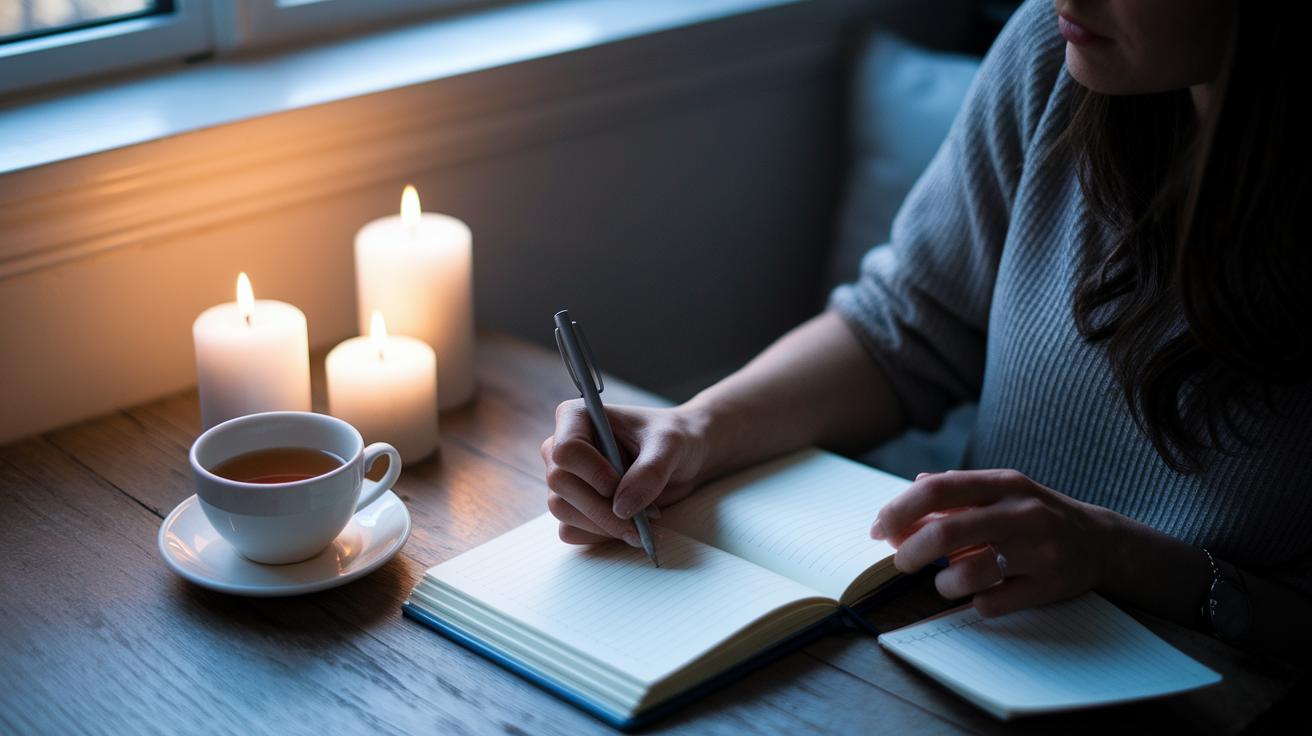
When the house grows quiet and your day slows down, claim a few minutes just for you. This little break lets you celebrate small wins and calm your mind before bed.
- Pick a time you can stick to, like after supper or right before lights out.
- Ask yourself, “What three simple things made me smile today?”
- Grab your journal. Jot down what went well, what felt hard and any new ideas.
- Set a phone alert or calendar note so you won’t forget.
Try a prompt like, “Today I felt calm when…” or “I’m proud I handled…” Honest words matter, no need for perfect grammar. Over time, your list of grateful thoughts becomes a quiet record of how far you’ve come.
Missed a night? That’s okay. Be kind to yourself and start again tomorrow. Studies show this habit can help you sleep more soundly and lift your mood. Spotting little sparks of joy can change how you replay the day in your mind.
Keep your journal on your bedside table. A dim lamp or a soft blanket can make the moment feel cozy. Maybe sip your favourite tea. Let your thoughts flow onto the page. Breathe. Pause. Then, before you drift off, read one line that makes you smile. That small act plants calm and builds a routine that sticks.
Leveraging Tools and Apps to Track Your Daily Mindfulness Habit

Tracking small wins can spark your motivation. A habit-tracking app like Insight Timer or Calm can book a guided imagery session and send a gentle reminder. Or go analogue. A worksheet or bullet journal shows your check marks and makes your streak visible. You might feel a soft pull to keep your chain going.
Turn on your phone’s Do Not Disturb to carve out a quiet moment. Breathe. Let the soft hush of your room settle in. Actually, those pings won’t call you back to auto-pilot.
Try habit stacking. Link your meditation reminder to your morning alarm or a calendar event. Each time you swipe to snooze, a prompt for a two-minute breath check pops up. Over time, these little nudges help anchor mindfulness in your daily flow.
| App/Tool | Key Feature | Usage Tip |
|---|---|---|
| Insight Timer | Library of guided meditations | Schedule a daily reminder |
| Generic habit-tracking app | Progress streak visuals | Set small daily goals |
| Phone’s Do Not Disturb | Silencing notifications | Create recurring mindful windows |
Combining digital tools with simple analogue logs makes building your daily mindfulness habit feel clear and doable. Notice how it fits into your day?
Troubleshooting Barriers in Your Daily Mindfulness Habit
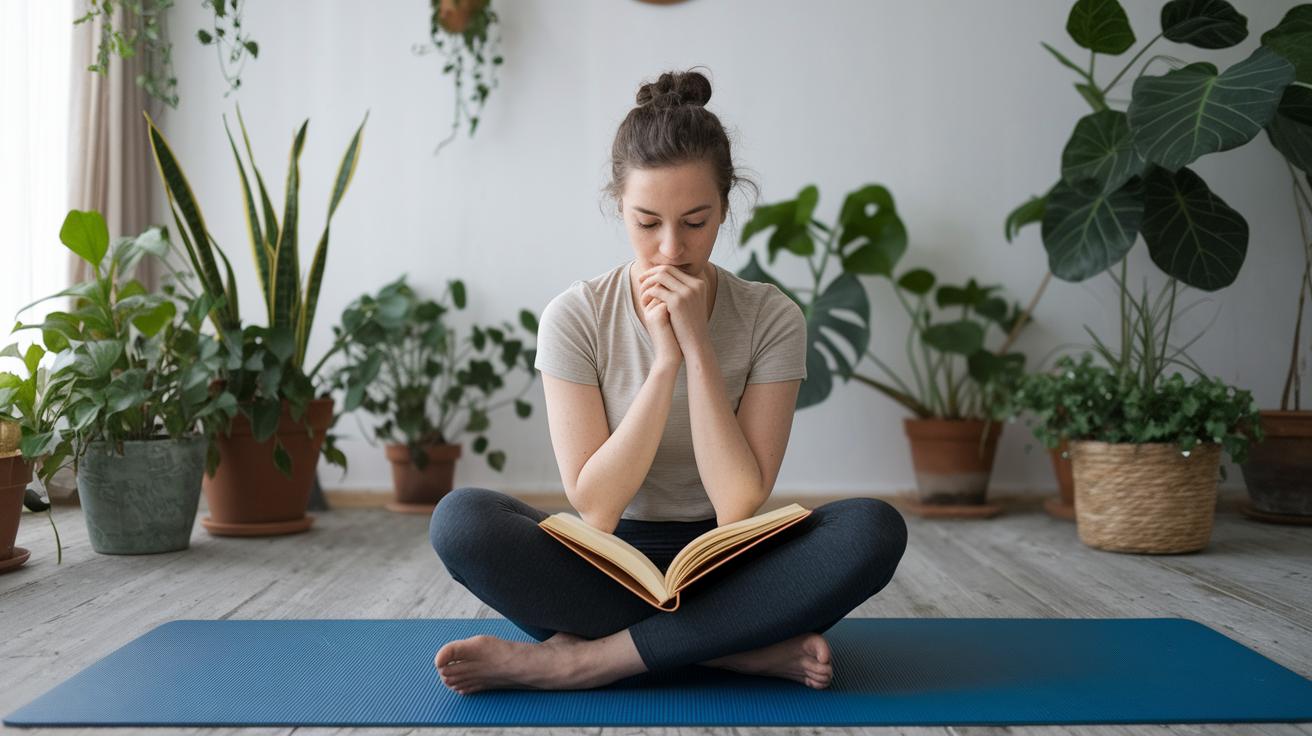
When your daily pause feels shaky or you forget it doesn’t mean you have failed. You’re not alone. Slip ups happen and sometimes it even feels boring. These little stumbles just point to new ways to learn.
- When you miss a session, practise a self compassion exercise (being kind to yourself) by noticing the moment without blame. You might quietly say to yourself “I’ll return to my breath” and softly guide your focus back there.
- To fight distractions, try a fresh visual cue. Move that sticky note or set a new phone reminder in an unexpected spot. Breathe.
- If you catch yourself on autopilot, introduce a bit of novelty. Walk along a new path or try a different seat in the park. You can even shift your posture during your pause to bring fresh awareness.
- Invite a friend or family member along. Sharing your goal in a warm chat boosts accountability and helps you feel seen.
Small shifts can reignite your focus and strengthen your stress resilience plan. Each tweak invites fresh curiosity and calm. And when support is close you’re far less likely to drift off course. Have you found this helpful?
Evidence-Based Benefits of a Daily Mindfulness Habit
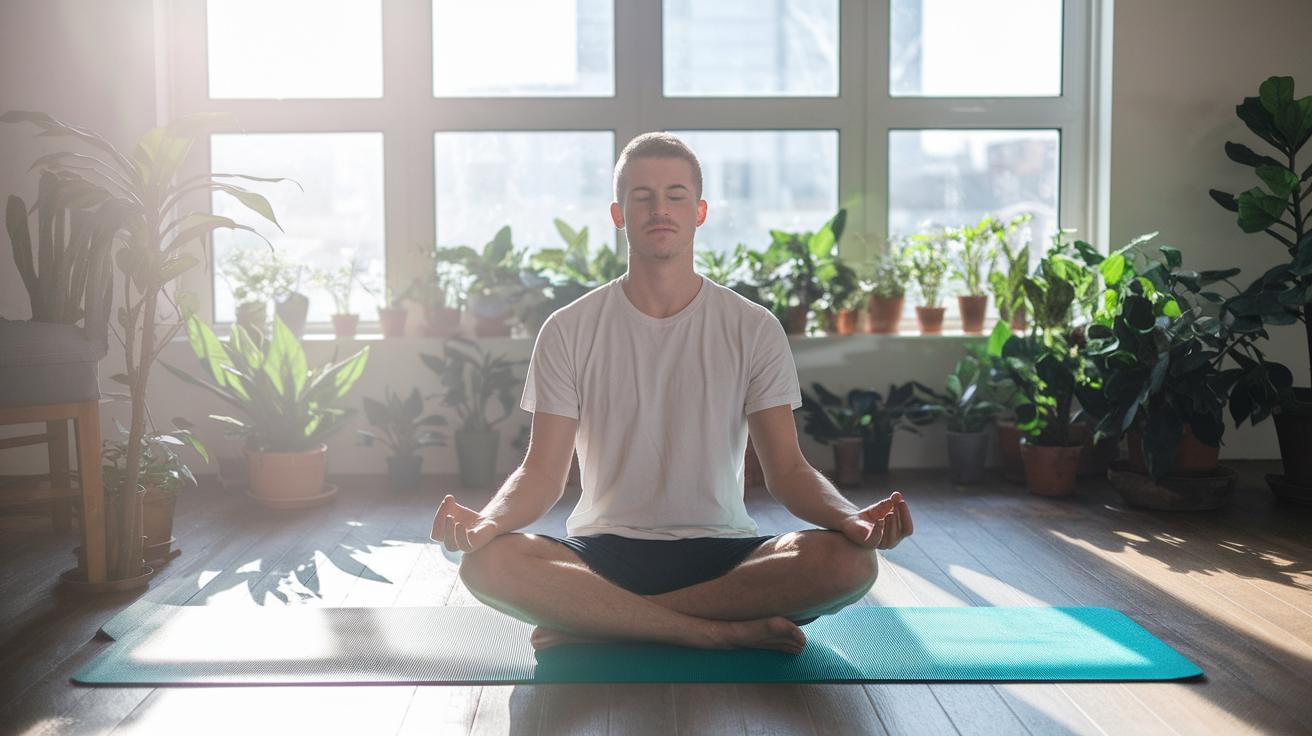
Breathe. Notice how your shoulders drop. If you practise mindfulness each day, you might feel tension soften in your body and mind.
Studies show daily mindfulness can lower cortisol (that’s the stress hormone) and even help calm your blood pressure.
A quiet mind can feel clearer. Spending just a few minutes tuning in to your breath and sensations often helps you focus better. Memory may get sharper too, whether you’re studying or tackling work.
Mindfulness lets you see your thoughts and feelings without rushing in to judge them. Over time, you might spot a worry or urge before it steers you off track.
Reviews of many studies (meta-analyses) back this up. Mindfulness-based cognitive therapy helps people step back from dark thoughts. That means fewer times slipping back into old patterns.
Your body notices changes as well. Steady breathing can slow your heart and bring a calmer rhythm. Some research links regular mindfulness to smoother metabolism, which supports your overall health.
These small shifts add up. A few mindful minutes each day can ripple into your work, school, and relationships. It’s a gentle path to lasting ease and clearer awareness.
Final Words
You’ve mapped out a clear path.
Begin with two quiet minutes, link to morning or evening routines, and weave short breaks through your day.
You’ve learned how to cue a mindful pause, reflect with gratitude, use apps to track progress, and meet common slip-ups with kindness.
You’ve also seen the science that shows less stress and sharper focus.
Keep these steps handy and try them again tomorrow.
With gentle practice and steady care, you’re on your way to learning how to build a daily mindfulness habit for lasting calm.
FAQ
Where can I find a mindfulness in everyday life PDF?
A mindfulness in everyday life PDF can be found from trusted sources like Inner Wellness Counselling or university mindfulness centres. You can download guided practice outlines and simple exercises to weave awareness into daily routines.
What are examples of mindfulness in everyday life?
Examples of mindfulness in everyday life include paying full attention to your breath as you wake, noticing flavours during meals, feeling your feet on the ground while you walk, and pausing during chores.
What are some mindfulness tips for beginners?
Mindfulness tips for beginners suggest starting with two minutes of breath focus, picking a consistent time to practice, finding a quiet spot, and gently returning your attention whenever thoughts wander.
What are mindfulness exercises for adults?
Mindfulness exercises for adults range from a brief body scan lying down, three-minute breath counting, mindful walking to tune into each step, and pausing before meals to savour flavours and sensations.
How do I start a daily mindfulness practice?
You start a daily mindfulness practice by committing two quiet minutes at a set time, focusing on each inhale and exhale, noting thoughts without judgment, and gradually increasing duration over the first month.
What are the 7 C’s of mindfulness?
The seven C’s of mindfulness are curiosity (open interest), calm (steady breath), clarity (clear mind), concentration (focused attention), compassion (kind awareness), connectedness (sense of unity) and choice (gentle redirection).
What are the 3 C’s of mindfulness?
The three C’s of mindfulness are catch (notice when your mind drifts), check in (observe your thoughts and feelings without judgement) and choose (kindly return focus to your breath or body).
What are the 5 R’s of mindfulness?
The five R’s of mindfulness are recognize when your mind wanders, release the distraction gently, relax into the present, return your attention to the breath or body and repeat as needed.
